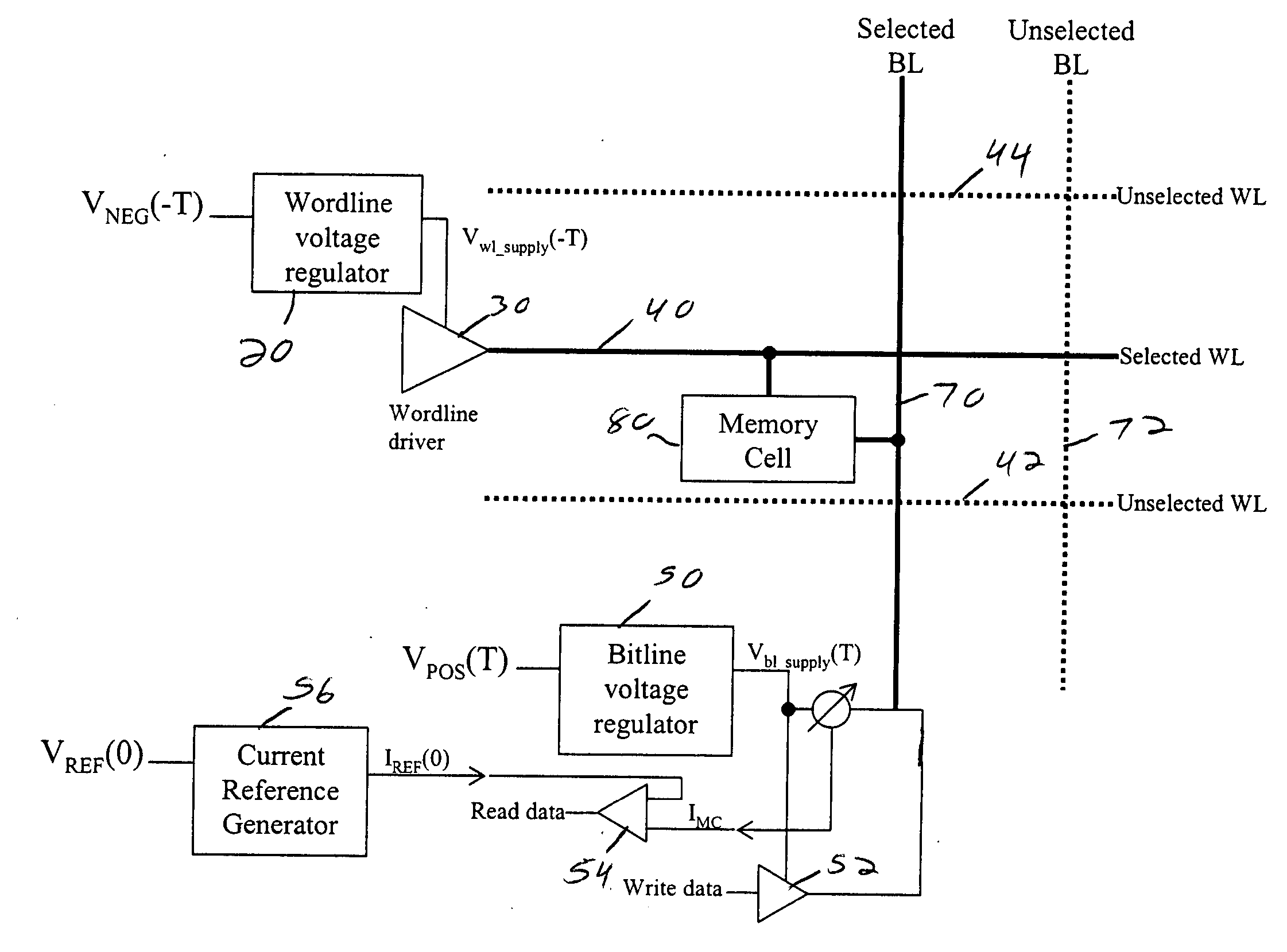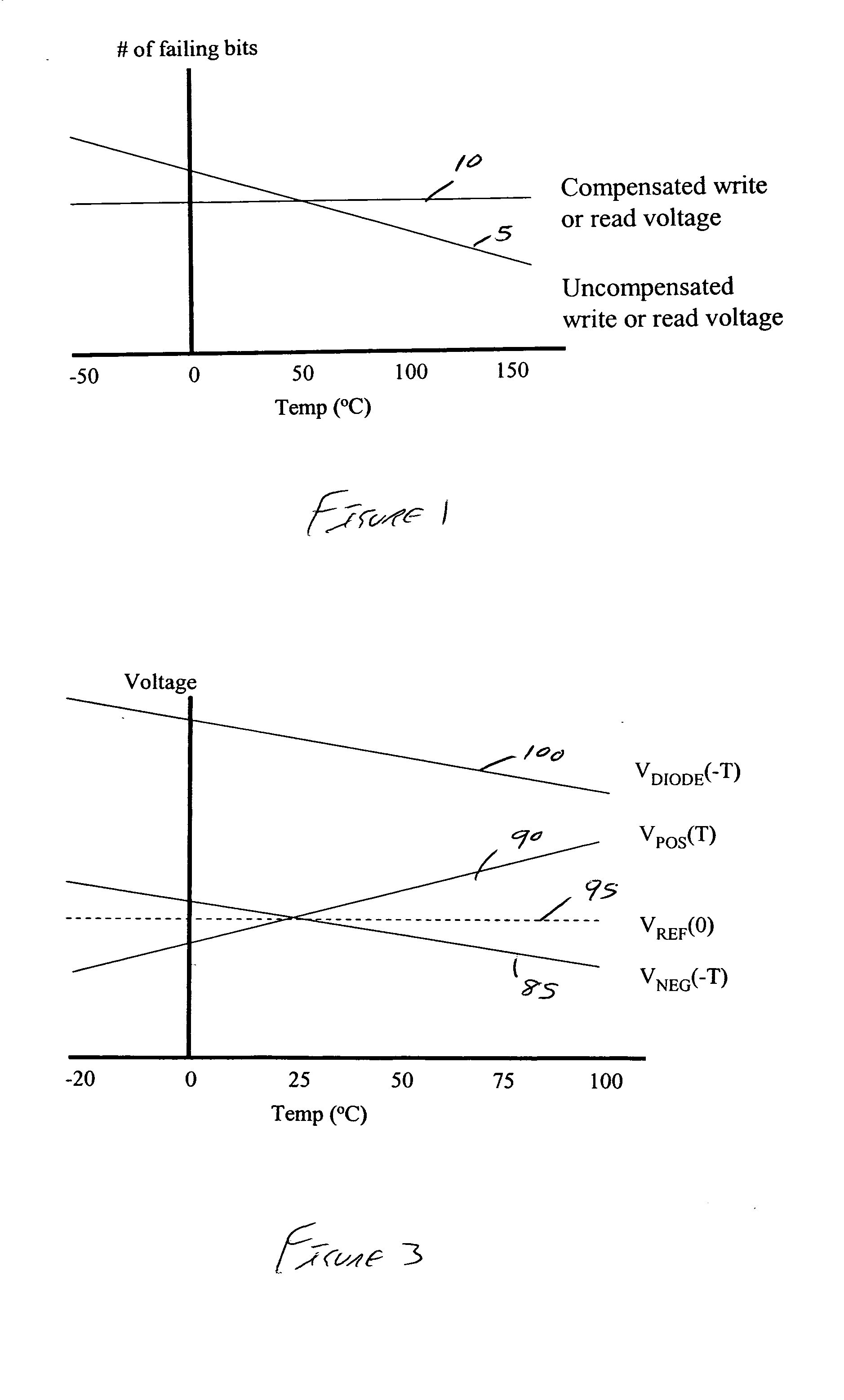Method and system for temperature compensation for memory cells with temperature-dependent behavior
a memory cell and temperature-dependent technology, applied in the field of method and system for temperature compensation of memory cells with temperature-dependent behavior, can solve the problems of increasing the number of memory cells that will fail, not ensuring the performance of the memory array, and difficult sorting
- Summary
- Abstract
- Description
- Claims
- Application Information
AI Technical Summary
Problems solved by technology
Method used
Image
Examples
Embodiment Construction
[0017] The preferred embodiments described herein relate to memory cells with temperature-dependent behavior. It should be noted that any suitable type of memory cell can be used. For example, the memory cell can be write-many or write-once, can be arranged in a two-dimensional or three-dimensional memory array, and can be made from any suitable material (e.g., semiconductor, phase-change, amorphous solids, MRAM, or organic passive elements). U.S. patent application Ser. No. 09 / 927,648 describes a suitable write-many memory cell, and U.S. Pat. Nos. 6,034,882 and 6,420,215 describe suitable write-once memory cells, as well as suitable techniques for forming a three-dimensional memory array. Each of those patent documents is assigned to the assignee of the present invention and is hereby incorporated by reference. Many of the embodiments described herein will be illustrated with reference to a memory cell comprising a PN diode in series with an antifuse, as described in the '882 and '...
PUM
 Login to View More
Login to View More Abstract
Description
Claims
Application Information
 Login to View More
Login to View More - R&D
- Intellectual Property
- Life Sciences
- Materials
- Tech Scout
- Unparalleled Data Quality
- Higher Quality Content
- 60% Fewer Hallucinations
Browse by: Latest US Patents, China's latest patents, Technical Efficacy Thesaurus, Application Domain, Technology Topic, Popular Technical Reports.
© 2025 PatSnap. All rights reserved.Legal|Privacy policy|Modern Slavery Act Transparency Statement|Sitemap|About US| Contact US: help@patsnap.com



